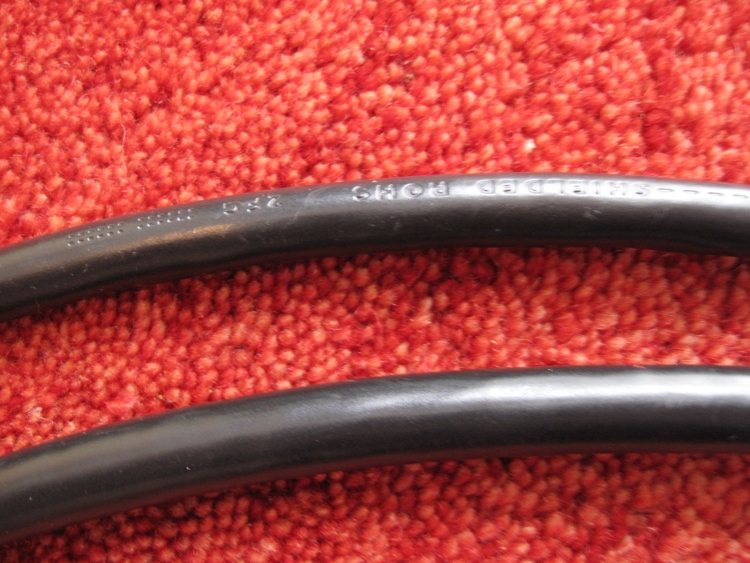
Two types of Belden power cable compared: 2,1mm and the much thicker 4mm
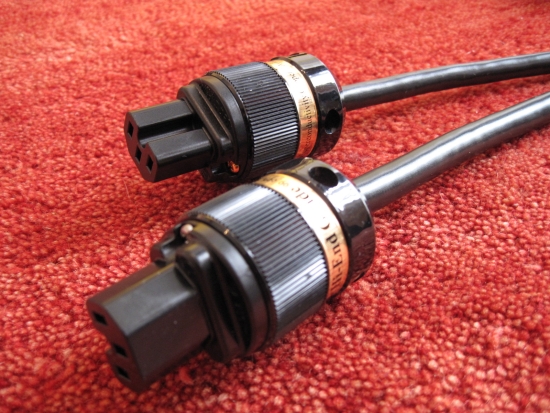
All cables were tested in the same length, in combination with the same connectors and each cable was manufactured in the same way, plugged in for the same phase, and burned in the same duration. During testing, only one cable at a time was connected, each time in the same position of the power strip/distributor/extension block.
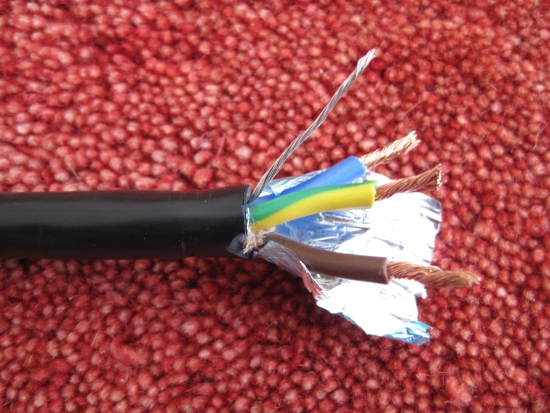
Above: Belden 2,1 mm
Belden power cable variants
Belden power cable basically comes in only one flavor. The only variables are the number of conductors, the amount of copper used, and whether or not there is foil shielding. The cable that I always use is the well-known SJT series 3x 2,1mm 19364. It would seem that Belden cable is more consistent in sound across their line than Lapp. But when the 4mm variant popped up, I was curious to find out how it compares to the regular 3 x2,1mm Belden.
Both cables are shielded, have the same sleeve material, and same number of conductors. The only difference lies in the amount of copper used in those conductors. Officially this makes the cable a better choice for use in audio groups due to its higher amperage rating.
More copper equals better sound, right?
While that is absolutely true for Lapp, I was not prepared for the disappointment presented when I swapped the regular 2,1mm Belden for the 4mm Belden.
The regular 2,1mm Belden can be a bit thin and lacking color and I had hoped that the thicker 4mm Belden would add some Lapp-color to the mix but that’s not what happened. Indeed the 4mm cable had more bass and was less thin-sounding than the 2,1mm cable. But it wasn’t the full meatiness of Lapp cable. The Belden still sounded harmonically more threadbare than my preferred Lapp type 1.
But what’s more: the 4mm Belden was dynamically compressed and sounded altogether more rhythmically restrained. Also, the treble was noticeably closed in which is a shame because the regular 2,1mm Belden has a very open and airy, albeit slightly harsh treble. Even though the 4mm Belden was definitely less aggressive in the treble, the overall impression was of a dull and uninspiring cable. I would recommend it only as compensation for setups that are otherwise very aggressive and too bright in nature.
Conclusion
To get that typical fast, open, and dynamically detailed Belden sound, use the thinner 2,1mm variant, not the bigger 4mm version.
Postscript 03-10-2021
Although I use Belden cables for nearly all my components, I am not claiming that this is the best cable there is. It is not! In fact, it’s really quite a mediocre cable. I just found that when using high-end power cables (let’s say around 1000 euros) and ultra-high-end power cables (several thousand euros), most of the time, these would provide a highly refined, smooth, and polished sound with higher apparent resolution and more air than the Belden but at the expense of transient sharpness, attack, dynamics, expression, or simply raw power. While this can still work well in certain systems, my system is inherently so refined and non-edgy, that it doesn’t need external polishing. I will say that the Belden can be upgraded significantly by using very good connectors. I have experimented with this at length (see for instance the Oyaide comparison) and found the Oyaide C-004 to provide a near-ideal balance of virtues. It’s very neutral, highly refined, and super-transparent, yet not too polished. That is unless you use the IEC as well as the Schuko on the same cable. In that case, I feel that the sound becomes a little too polite. Thus, I use the C-004 along with a Bals Schuko on the other end, to balance this out.
It is my ideal to use the most neutral cables that do the least harm to the signal. This is what the Beldens do for me, they don’t editorialize the music by boosting the bass, warming the mids, or fluidifying the treble. Nor do they slow the rhythm, or unnaturally speed it up. They deviate from neutrality as little as I have found to be possible.
When a cable sounds wonderful but also makes the music sound over-polite, for me, it moves away from real music and attains a more hi-fi aspect. Of course, YMMV and I will not discard the fact that many people use cables (power cables, too) to pull the sound of their system in a certain direction. Although I have also done this in the not-too-distant past, and I now feel this is not the right way to go, I still think it’s a valid avenue to explore. If an expensive power cable gives you precisely that which you are looking for and you are willing to spend on it, then by all means go for it.
Although I am certain that there should be a cable that maintains all of the Belden’s core strengths, while improving on it in certain areas, I simply have not yet come across it.

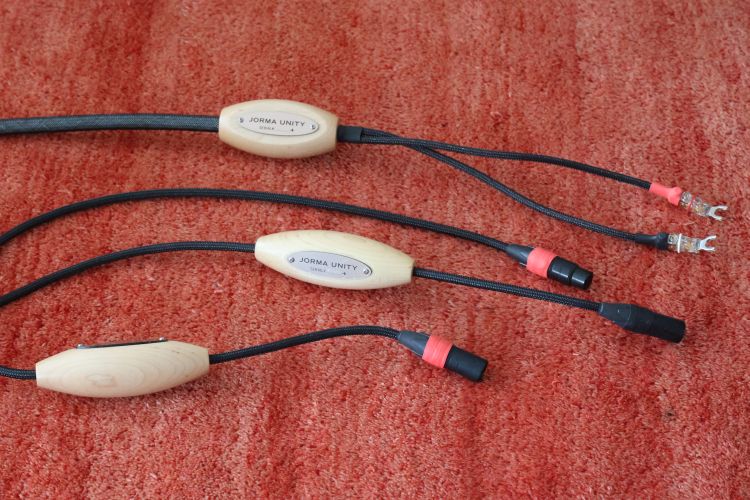
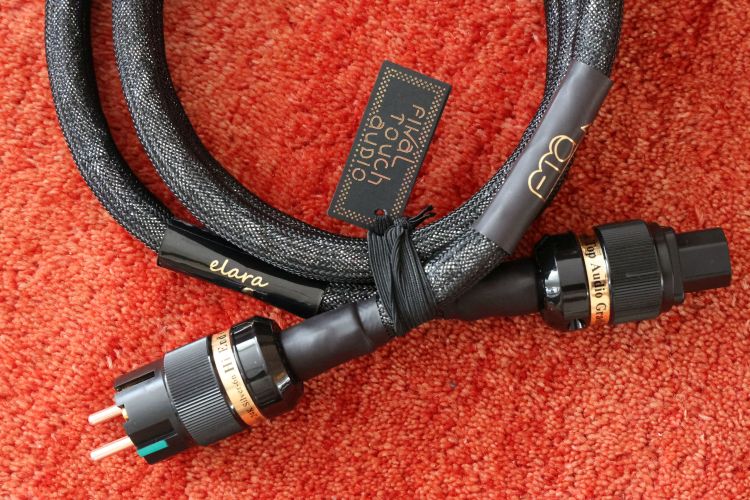
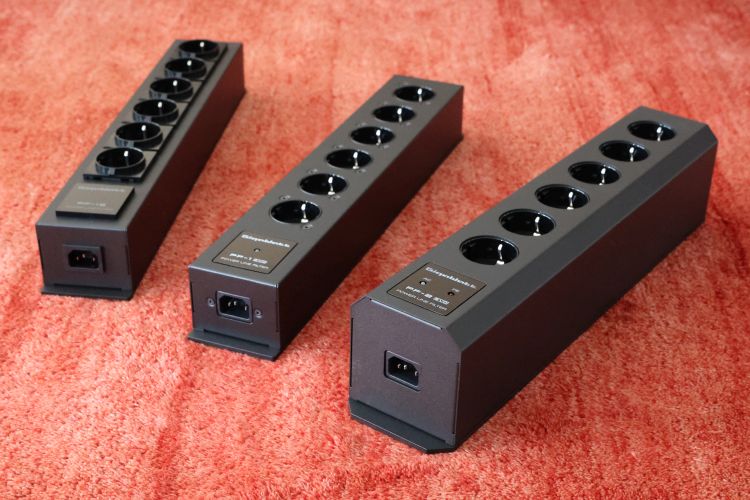
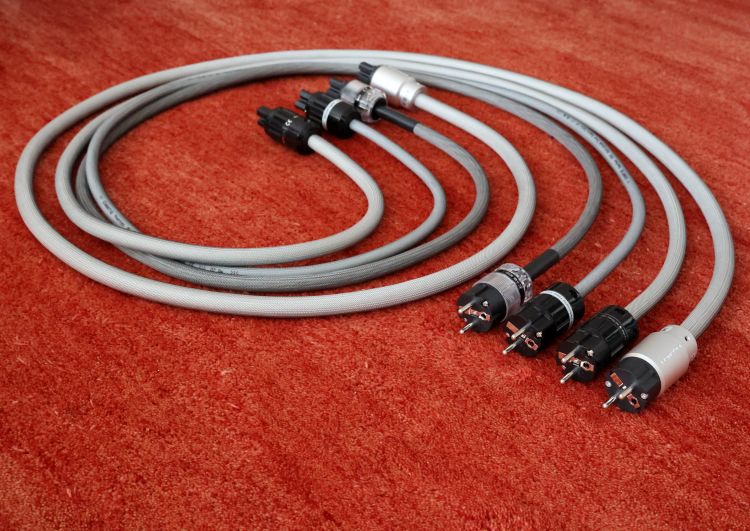
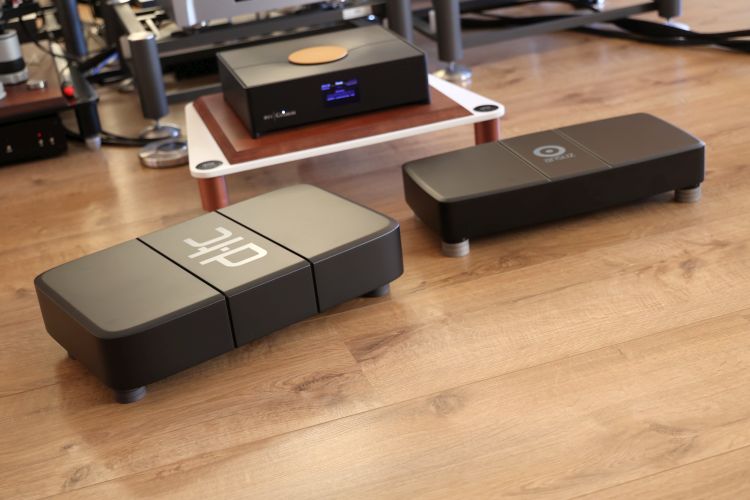
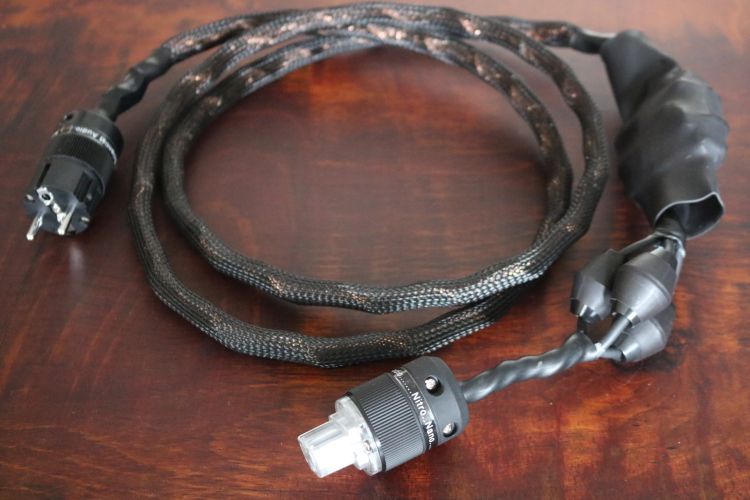
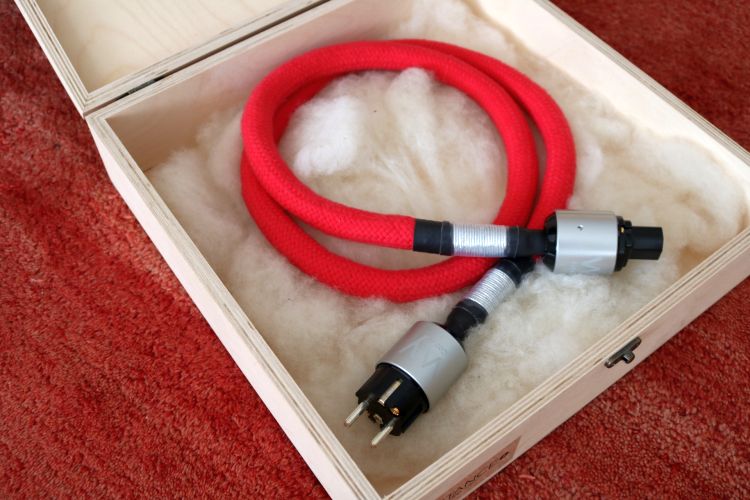
Replaced the Belden 3x 2.1mm powercable from house fusebox to power connector , pre power section , by Olflex heat 260 C MC 4G 2.5 , same length , 11M ,it is an all teflon cable , result more audible detail and definition . In my opinion a excellent upgrade
see text above
Do you have any thoughts on mains blocks and which cables to use? especially for a DIY project. Thank you
Hi Graham, I do have some ideas on this, especially w/r to the internal cabling and wiring scheme. See Extensionblock/Filter Info in the “Insights” section.
Thank you Christian. Trying to find a Metal extension block that is not crazy amounts of money is near impossible- they are also rare.
I was going to buy a bare block then add some Lapp cable to it as a cheap alternative to the expensive ones you can buy.
Bare blocks are also rare I’m afraid. Maybe there are pre-drilled boxes on Ali? Drilling the holes yourself in a profile or box is A LOT of work. Lapp cable sounds a little fat and round/warm. If that’s what you’re after then go for it of course. For power applications I prefer solid core wires ideally with PE of PTFE (Teflon) insulation.
Thank you for the advice, I will do the solid core wire. Do you you have any thoughts on blocks that are at a good price point?
The block I have at the moment which I want to replace with shielded wire has surge protection, earthed and has an on off switch, should I convert this with shielded solid core wire?
Thank you I really appreciate your help Christiaan
Internal wiring does not need to be shielded if the block is made from alu or steel and is earthed. I would bypass the switch if possible. Please have a look at the power extensionblock and power cable articles that I have published, I think you’ll find lots of useful info.
Hello Christiann.
Advice please. I have bought a second hand Olson distribution gang plug 4 plugs. It is well made and metal clad. It has a internal fuse and an independent earthing to the insidemetal case and an earthing wire on the exterior. Do I disable the fuse and the earthing? and rewire it directly as per normal distribution gang plugs? Thank you.
Hi Graham, the UK (where I assume you are located) has different rules regarding fuses than the Netherlands. We don’t use fuses inside mains connectors or power distribution strips but the UK does. Bypassing these would be against regulations and potentially dangerous, although there are still the mains circuit breaker and the fuses inside the equipment. Regarding shielding and earthing: I would leave these both connected inside the distribution block. Only when the cable reaches the end audio component can the shielding be left foating on that end. Naturally, earth should remain connected.
Thank you Christian. It does have a fuse in the main plug and then it also has a fuse in the main metal unit. It is double fused.
I have just taken apart a cheap uk gang plug, made of plastic. The main plug is mused and it does not have a fuse inside the plastic unit.
I think it will be best to get a electrician to do this and get uk padi tested..
Thank you for your help Christiaan.
Hallo Christiaan, kun je me vertellen waar ik deze kabel kan aanschaffen? Het klinkt als een prima kabel die relatief goedkoop is. Ik bedoel de Belden 19364 met Bals Schuko en Oyaide C-004 connectoren. Wellicht is deze vraag enigszins ongeeigend op deze site. Echter, ik zie geen andere mogelijkheid om deze vraag eders te stellen
Alvast dank voor je reactie.
Mvg,
Eisse Drewes
Hi Eisse, The cable as mentioned is something that I make from parts myself. I buy the two connectors and cable separately and make them in all the lengths that I need. The Belden 19364 can be purchased per meter “of the reel” from a variety of shops, for instance, W&W audio, JouwHifi, or Studio Alkmaar, so long as Ben has not 100% stopped. The Bals schukos have been updated with a different appearance but should still sound largely the same and they can probably easiest be purchased from Ebay. For the Oyaide, be careful, as fakes are sold on Ebay. These connectors are available from lots of shops in the Netherlands but lately, they have become quite expensive. If you don’t mind shopping abroad, you can buy them considerably cheaper from audiophonics.fr
Hello Christiaan,
Thanks a lot for your quick response and your extensive information.
I’m going to contact the companies you mentioned above.
Kind regards, thanks again,
Eisse
Hi Christiaan,
Could you confirm what the optimum length is for Belden/Bals/Oyaide C-004 cables from your point of view, please? I am having several made after all & would love to make them consistent.
Thanks so much in advance. I love your work! 🙂
Best wishes,
Jason
Soundwise, I’ve not found there to be an ideal length for Belden cable, however, length-wise, I find 2m to be ideal. With the extension blocks in the middle, they can reach every component, even the uppermost component when stacked three components high on the rack’s top level.
Yes, I am thinking most about soundwise. I read your article about the impact of length. For my rack & distributor setup 1m lengths will be enough to reach all components.
In my view, the issue of length, ideal or not (which is probably subjective), matters most with cables that have a strong character or add warmth. This is the case with Lapp cables. With Belden, I never found notable differences when comparing cables of different lengths.
Hello Christian, could you explain the difference with the red Belden cable 83803 please ? Thank, Frédéric
The 83803 sounds tighter and faster and more explicit, more detailed, too, and its treble is more accurate. Seems all great, right? However, it is also quite strict and dry and it can quickly become too much. It’s a great cable but use it with care.
Hi Christiaan, may I ask for your opinion about powercords for subwoofers. Until recent I was allergic to subwoofers in stereo, but now I have a small, pretty fast Rel sub I like it quite much.
It’s sound fast, natural and a tiny bit on the warm side. (Which is my preference).
I would like to add a powercord to get a tiny bit more neutral sound, good transient response but most important good texture for instruments. I forgot to mention the quality three dimensionality, because as you probably know good subwoofers add spaciousnesses. That’s the main reason besides texture I want to add a good powercord. But as you know tone/ texture and spaciousness are pretty rare together.
I’m struggling with how much budget Inhave to make. Is a nice Furutech bulk cable needed or perhaps Gigawatt EVO or Belden also might sound good?
Hi Nick, avoid Furutech or Lapp, or any other cable that sounds rich, smooth, fluid, or warm. Even Belden is not a great match for a sub. A sub needs a very neutral and clean cable. I find that standard freebie cables already get many aspects right (and these are what I am currently using with the two MJ subs that I am reviewing). You could swap to a cable with Teflon insulation and/or something that uses solid core conductors. You could even make a cable yourself using solid core installation wire. Tone/ texture and spaciousness should be provided by the source, not added via cables, if you want to retain the best coherence between sub and mains.
Thank you Christiaan. Is it correct the Gigawatt EVO would be a good choice for me? Which connectors do you recommend Bals perhaps and what plating?
Yes, GigaWatt EVO would be a good cable, LC1 EVO is the tightest one that I have heard. It was even too controlled for me when used with a Wadia DAC but for a sub, it might be great. If you try it and find it is too clean or too lean after all, you can always shift up to a slightly fuller sounding cable, like the LC2 (more copper = fuller sound, also with solid core conductors and also when these conductors are insulated from each other), or perhaps the current PowerSync stranded wire GigaWatt cables. I have them here for a test and will report my findings in a Mini Review.
Yes, Bals is great, just nickel plating is fine (for subs in any case). Any precious metal plating will beautify/sweeten/smoothen the sound.
I think I will limit this to two questions at a time…
1. Many years ago I got some Teflon coated wire (two conductors plus shield) and made some interconnects. One thing I tried that I had read about was connecting the shield to one end of the interconnect only, and this gets plugged into the “To” end. Thorough listening tests confirmed that it did sound somewhat better that way.
I was thinking that this may apply to power cords too, connecting the shield to ground only at the wall plug end. I’ve seen this mentioned in only one place though – don’t remember where.
Have you tried this and did you like it?
2. Has anyone compared tinned and untinned copper wire cables of any sort, that is otherwise identical, sonically?
Internet searching does not tell me much. A couple audiophiles say they prefer untinned.
Hi Brandon, indeed, the commonly agreed wisdom for power cable shielding is to connect the shield only on the source end (power outlet). I think you may have seen info on this here on HFA in the Insights section;-). I have never done tests with alternate connection schemes.
Alas, I have never been able to compare tinned versus non-tinned conductors in cables of the same origin, only different types with different dielectricum and build so you can’t draw pure conclusions. As far as I know, the main purpose for tinning wires is to prevent oxidation in humid environments. But I would argue that with good sleeving, that’s no problem to begin with, certainly not for audiophile use.
Hi, what is the exact model of the bigger (4mm) Belden Cable?
Alas – I do not recall. I bought it at a shop just as “the 4mm variant”.
You have experimented enough with power cords that maybe you have answers. I am looking for “rules of thumb” re system and component and power cord wiring and grounding:
I have older but pretty good preamp and tube amp, of different brands. They each have a fixed two wire power cord.
I am in the US, which did not used to ground all equipment.
I suspect my components would do better with an AC inlet (jack) and a modern power cord.
Would it be better sonically to use a 3-wire (IEC) cord and then ground the chassis of both? Or just ground one of them?
Or just two wires plus shield, and ground the shield at the wall end?
The amp I am using now is grounded:
I could run a wire from preamp chassis to amp chassis and only ground one to the wall.
Too many options!
I am a fan of star-wiring, meaning that every component should be grounded to the same source. As for grounding or not, I suggest simply listening to the result. There’s a difference but you may prefer one or the other. I personally prefer to have all components grounded. But I tried several times also grounding the audio racks but each time ultimately decided against it. Grounding (and shielding) can have a “centering” and control aspect which can be beneficial but, like a damping factor, can be taken too far. As for existing components without ground wire, adding ground can definitely have an effect but you need to be careful not to work against their intended operating priciple by adding a ground. Also, the question becomes what to ground. Only the chassis? The PCB earth, digital and analog, etc. There are variables and they all matter. In general, I tend to leave audio components as they are w/r to the earthing.
This page turns one blank line after a paragraph into four!
Thanks, now sorted.
Hi,
What would you say the burn in time, for new off the reel Belden 19364 mains cable is before I can hear it at it’s optimum?
Many thanks
Russ
19364 runs in very quickly in my experience. A couple of hours is usually enough to get you 95% there.
Hi, I want to know what model of the Bigger 4 mm. ? I try to read your comment but not see any other Belden except 19364
Alas, I don’t have these cables any more and I don’t recall any specific type number. It was simply sold as 4mm2.
Hello Christian
I first purchased a belden 19364 (Type SJT Shielded 14AWG 2.08mm2).
How can you tell the direction of the cable? Do you have any ideas?
I will use this cable with Oyade C-004 iec and Bals schuko connectors
Thanks a lot
Mario
Hi Mario, it is not a 100% guarantee, but I always use the cables reading the print on the sleeve from source (wall outlet) to destination (component). I’m getting consistent results when using them like this.
Ok good idea, thanks
Mario